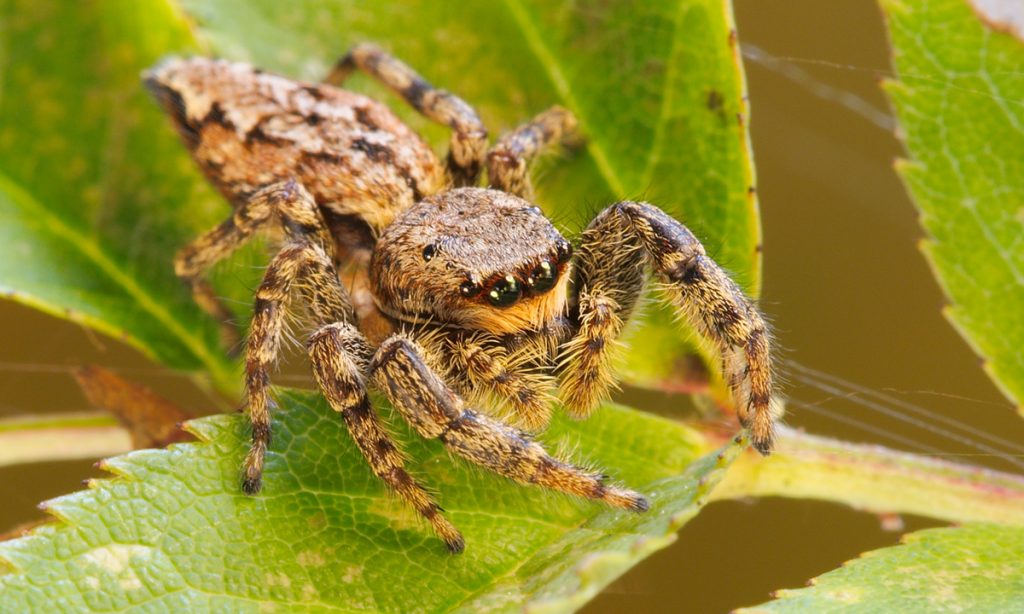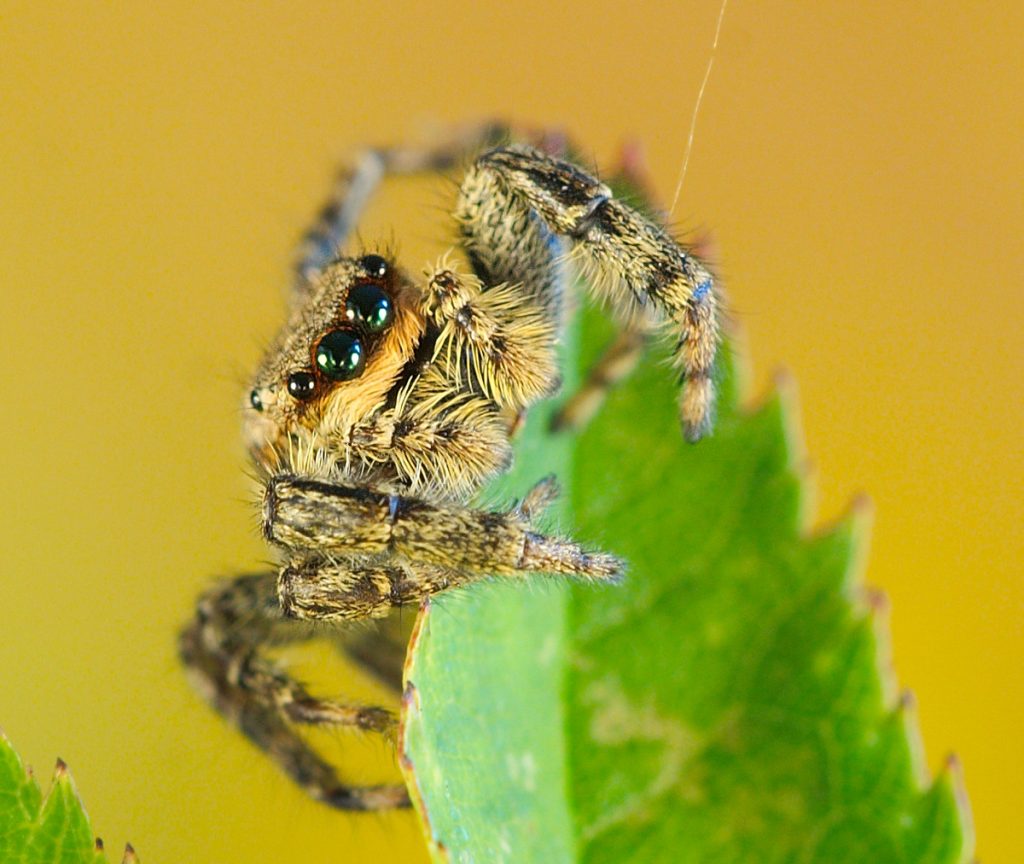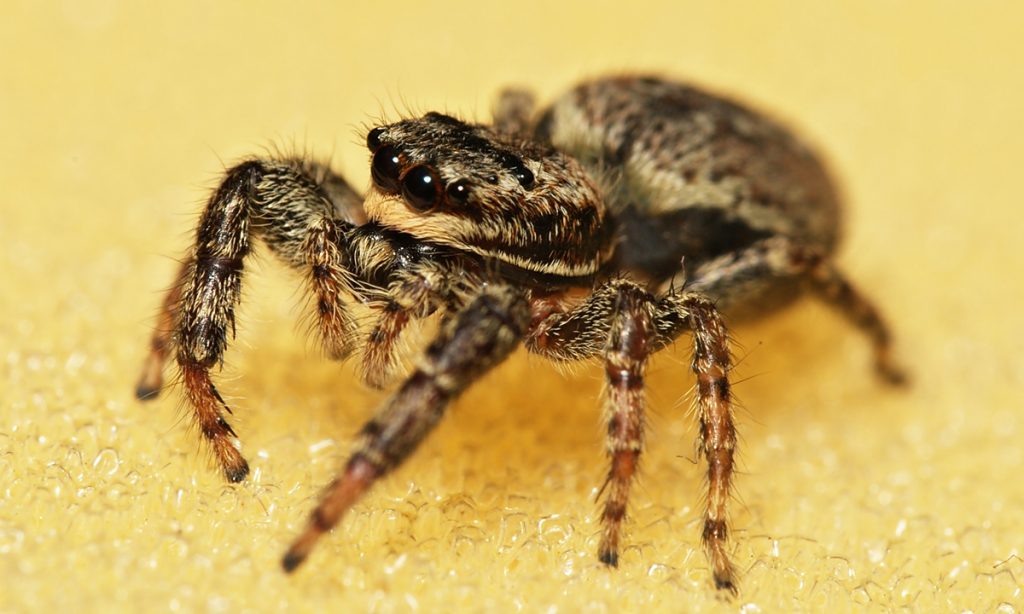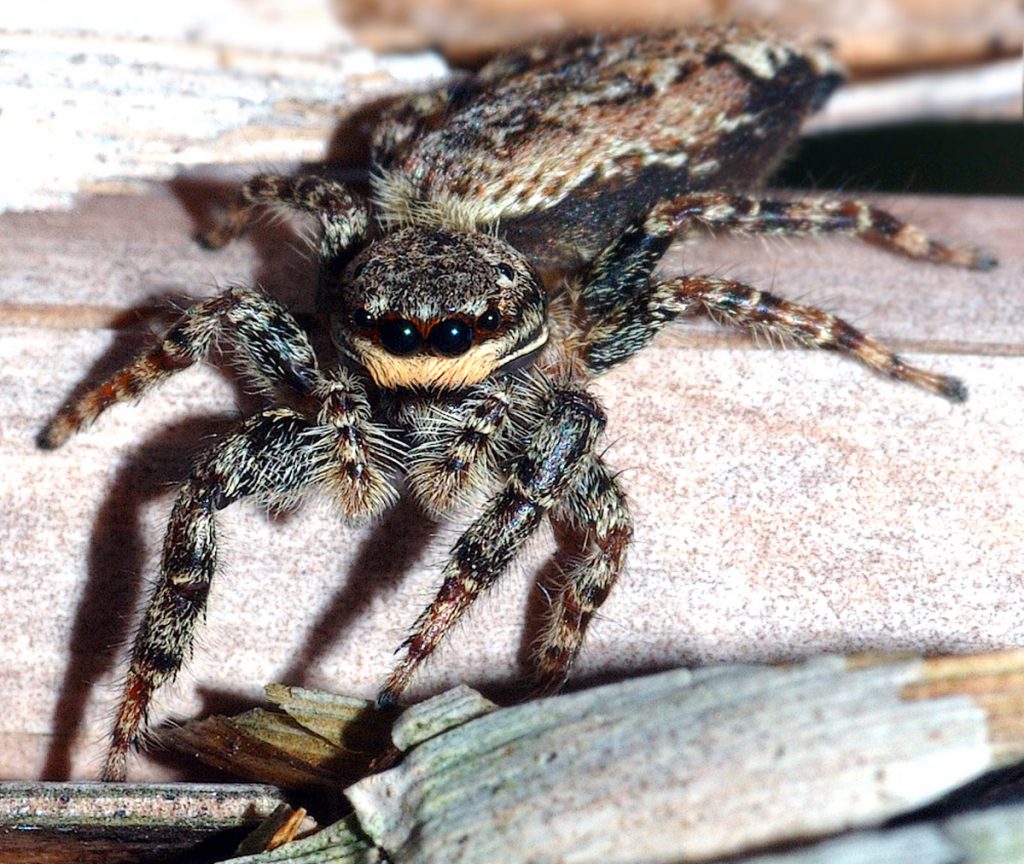
Jumping spiders, with their giant, shiny eyes, staccato movements, and stumpy bodies, are among the most charismatic arachnids out there. But all that charisma can’t erase the sense of alienness these spiders give off — perhaps an inevitable side-effect of the hundreds of millions of years of evolution separating them from humans.
Now, new research suggests that these little critters might be more like us than you’d think. The study, published in the Journal of Zoology, found that early childhood enrichment and mental exercise do wonders for a jumping spider’s brain, enlarging areas of the brain associated with higher-order functions.
It’s no secret that the brains of vertebrates like mammals and birds are “plastic,” meaning the brain can make modifications to itself in response to environmental factors like social exposure to other members of the species, the complexity of their physical habitat, or even — as in humans — exposure to chronic stress.
In big-brained animals that demonstrate complex behaviors and interactions with their environment, it’s not that surprising that their brains can be influenced by childhood experiences. But the brains of arthropods, such as insects and arachnids, also seem to be plastic in response to their surroundings as juveniles.

Evidence is mounting that in insects, spiders, and crustaceans, the volume of brain regions associated with more complex cognitive functions — dense hubs of nerve fibers called “neuropils” — is influenced by environmental conditions when the animal is young. Basically, baby bugs can get a permanent brain boost from being exposed to more intellectually demanding surroundings.
But, there are several ways for an environment to be more mentally taxing, and it isn’t clear which pressure is more effective at influencing invertebrate brains. For example, is needing to navigate social interactions more impactful on brain size? Or does the complexity of the physical environment matter more?
To help answer this, a team of German researchers tested how these different forms of challenging childhood conditions modified the brains of jumping spiders from the species Marpissa muscosa.

The research team caught adult female spiders from the countryside and raised their young in one of three different settings. Some spiderlings were raised in “deprived” conditions, which consisted of being placed alone in a plastic box with nothing but a piece of tissue paper. Another set of spiders were put in a physically “enriched” enclosure, which had a variety of objects inside, like moss, leaves, bark, Legos, brightly-colored cords, and bottle caps. These spiders were also raised solo. The last set of spiders were raised together in a cage with their siblings in a group of five to fifteen spiderlings.
For comparison, the researchers also analyzed wild, adult spiders; these were held in the solitary “enriched” enclosures for a few months before their brains were measured.
Once the spiders reached adulthood, the scientists scanned their brains using X-ray microtomography — or microCT — which is a way to use high-powered x-rays to reconstruct 3D models of very small things (like spider brains), all without cutting up the sample.

Overall, the brains of spiders raised in the physically enriched cages were slightly larger than the rest, with the “enriched” spiders having the largest brains, “group”-reared spiders in the middle, and “deprived” spiders at the bottom. The wild-caught spiders had smaller brains than any of the lab-reared spiders. But these differences were all fairly slight.
When the researchers focused on two neuropils associated with “higher-order” processes in spider brains — the mushroom and arcuate bodies — they found some interesting differences. The mushroom body, which is thought to be linked to memory and learning, actually didn’t increase in size among the “enriched” and “group” raised spiders compared to the “deprived” spiders. However, based on other work with honeybees, it seems that the mushroom body stays the same size, but just gets more dense. So, if there were changes in the spider mushroom bodies, they may not be detectable with a microCT scan.
On the other hand, the arcuate body, which is thought to be involved with vision, locomotor control, and the intake of sensory information from surroundings, was majorly impacted by the spiders’ rearing environment. Spiders in the physically enriched cages grew up to have significantly larger arcuate bodies than their deprived counterparts.

So, yes, it would seem that the spider version of Baby Einstein beefs up brainpower — specifically when it comes to taking in visual information and translating it to physical activity, like jumping and climbing.
Though the wild spiders, theoretically, had the most demanding and difficult childhoods of all — being out in a neverending landscape of leaves and twigs and ledges — their brains were the smallest. However, the researchers suggest that this may be because the captive spiders had a regular supply of food, something almost unheard of in the wild. It’s likely not that wild spiders have shriveled brains, but that captive spiders, no matter their surroundings or social interaction level, have a surplus of food energy to grow brains.
These findings shed a light on the intellectual life and developmental needs of an animal all too commonly envisioned as a food-driven automaton, showing us that even spiders possess a highly-adaptive brain that needs stimulation to thrive. Just like human babies, jumping spiders need a certain level of sensory stimulation to develop normal, healthy brains.




